#ZF 8-speed transmission
Photo
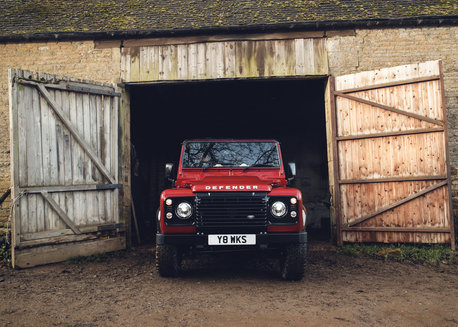
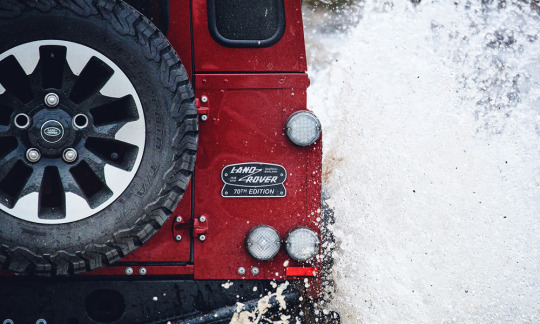
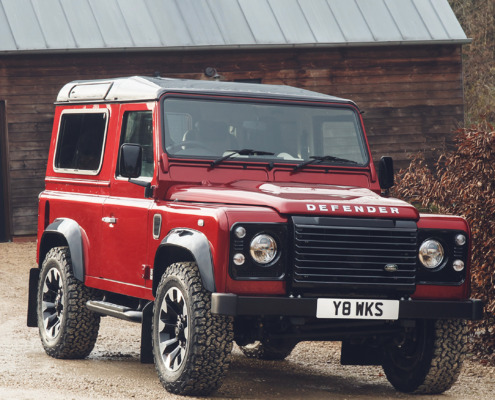
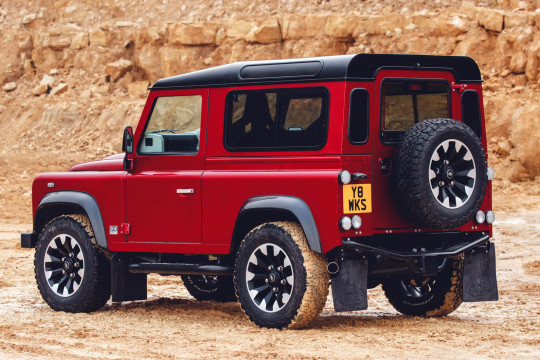
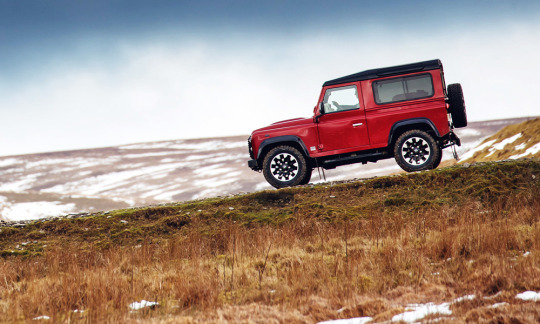

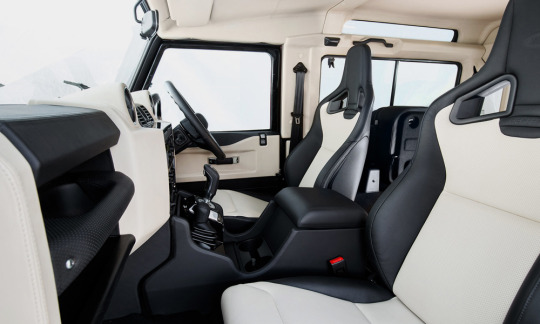
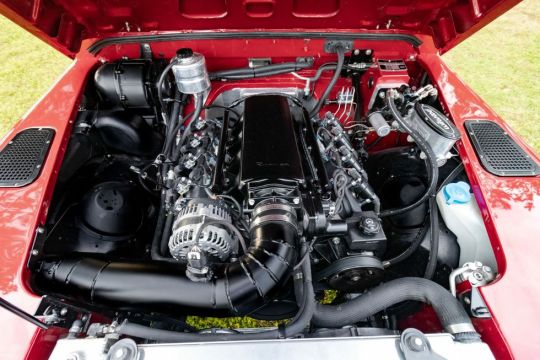
Land Rover Defender Works V8 70th Edition
The mountain goat of an SUV has been an icon in the off-roading world. No-nonsense, tough as nails, and about as aerodynamic as a window air-conditioning unit, the Defender goes where few others can. In a final edition of sorts, Land Rover has outfitted both the 90 (2-door) and 110 (4-door) Defender with its most potent mill yet, a burly 5.0-liter V8 that delivers a mud-slinging 400-horsepower and launches the SUV to 60 in 5.6 seconds. This one gets outfitted with Recaro sports seats clad in two-tone Taurus leather, so you’re backside isn’t wanting for comfort as you bound over rocks. It’s also easier to drive thanks to a new ZF 8-speed automatic transmission with sport mode and quickshift responsiveness. And to uphold its rugged reputation, the 70th Edition gets a dual-speed transfer case with a center differential, as well as updated suspension components and brakes. You can’t buy it here, sadly, but it might just be worth it to move to the UK just to own one. Only 150 of these will be made, and we hope you get yours in classic green.
110 notes
·
View notes
Text
Here’s a lil’ sneak peek at a nice one; this is my daily, a 2017 Jaguar “X260” XF 20d Prestige. It just underwent a full paint correction and detail in prep for sale on Cars & Bids.
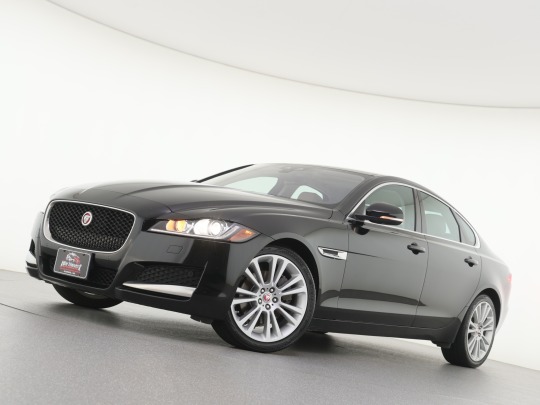
This one is finished in Ultimate Black Metallic over Latte/Espresso with Burl Walnut Gloss and Morse Code Aluminum. It’s equipped with its namesake 20d engine, a 2.0l turbodiesel I4, pushing 181 HP and 318 lb-ft of torque to all four wheels via a ZF 8-speed automatic.
It’s good for a moderate 0-60 sprint of 7.9 seconds, a top speed of 121 MPH, and upwards of 40 MPG. Where its promise really lives is all in the midrange; like most diesel engines, low-end torque is constantly there, but the immense buildup of power that comes on towards the middle of the rev range is what really keeps these pulling and pushing. Couple that natural diesel torque curve with the forced induction of a turbocharger, and this power train comes alive around 1,700 RPMs. Keeping the transmission in S and the drive modes in Dynamic will place the car squarely in that rev band and keep it there as long as possible, always spooling the turbo and maintaining a slightly higher engine speed.
The resulting performance is intoxicating; carving the winding backgrounds of Carlisle, navigating the undulating landscape of Stowe, and overtaking leisurely traffic in Manchester will never once feel slow, or lethargic, or dangerous. You just ease into the accelerator, listen for the telltale whistle, dig in, and feel as an immense surge propels your forward. It’s a charismatic power plant, and one that keeps you on your toes - always keeping you acutely aware of when and where power builds, where it wanes, how it wants to go, and where you can hand off the momentum and torque of the engine to the transmission for a kick-down.
It’s immensely helpful that Jaguar’s complex suspension setup and highly tailored geometry give this car a ride only margins away from a Mercedes-Benz, with the eager spirit of an Audi, and the sharpness of a BMW. With a nearly even weight split, a wider track than many of its primary competitors, and one of the most capable AWD systems outside of Audi Quattro, Subaru Symmetrical, and Alfa/Maserati Q4, and this car definitely poses a unique proposition for the kind of buyer that genuinely wants a nice, daily drivable, efficient, and reliable car, but with all the marks of a sporty and engaging drive, when needed. It’s a car that has usable power at all times, but especially so when you’ve reached the apex of a turn and you rocket out with immediate power on tap, or when you feel the ground rising below you and the car hunkers down and starts pulling like a Mack truck even as it climbs that hill.
In reality, the ingenuity of this car and JLR’s Ingenium engine is that it feels only a step away from a more traditional gasoline engine, but the elements that make it a diesel are not lost either. Its power is similar to any gas counterpart, but there’s far more drama and flair and theatrics with it. In some parts, it harkens back to much earlier turbocharged cars that would drive quite normally until boost kicked in, in outrageous amounts, all at once, and suddenly the entire characteristic of the experience would change. It’s the same reason why I bought not one but two (nearly) identical diesel Jaguars!
After getting t-boned in my XE 20d Prestige, I purchased an E 63 AMG that was flawless in every regard. It was exceptionally well-equipped and was by far the most insane car I’d ever owned, but after barely six months, I sold it and purchased this XF, shipping it all the way from California to Massachusetts in the height of 2022’s wildfires and market inflation, and it’s been a blast ever since.
This one is rather uniquely equipped with options such as the Comfort & Convenience and Technology Packages, plus additional à la carte options, giving it soft-close doors, heated/ventilated front seats, heated rear seats, a heated steering wheel, power liftgate, 10.2” InControl Touch Pro, 12.3” digital cockpit, 17-speaker/825W Meridian Surround Sound, and 19” Axis 14-spoke wheels.
But, with all that said, it is time for another new experience, and with the fun of summer right around the corner, I think it’s time to part ways with this charming Brit for something a little more exotic. So, I leave you now with a few photos that will be featured on Cars & Bids in the coming weeks:
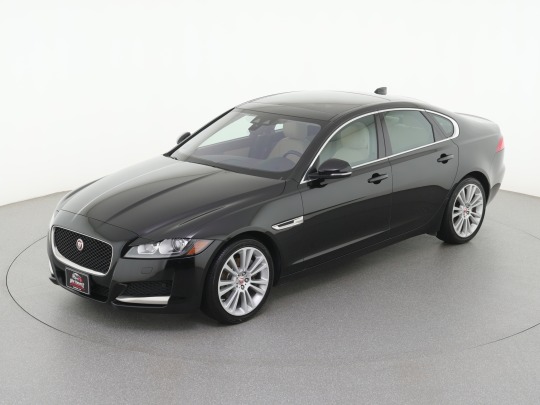
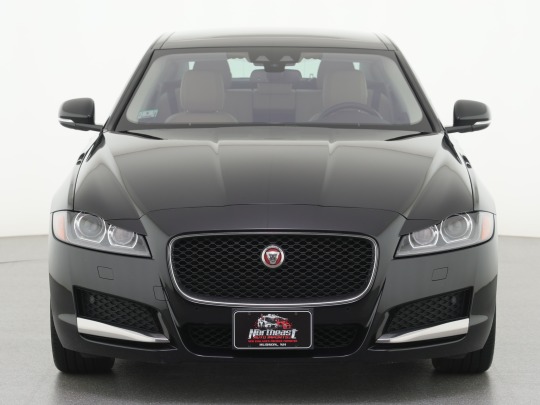
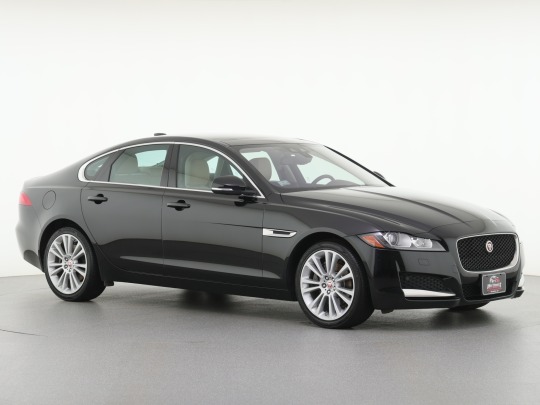
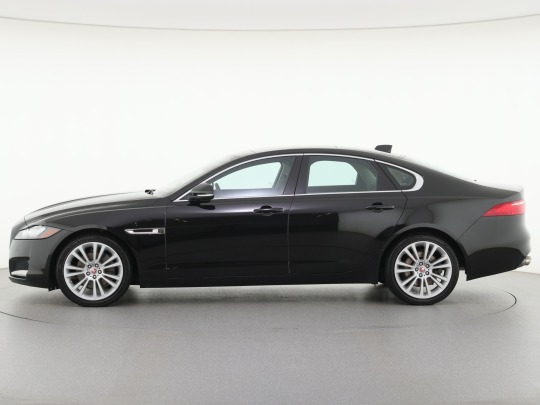
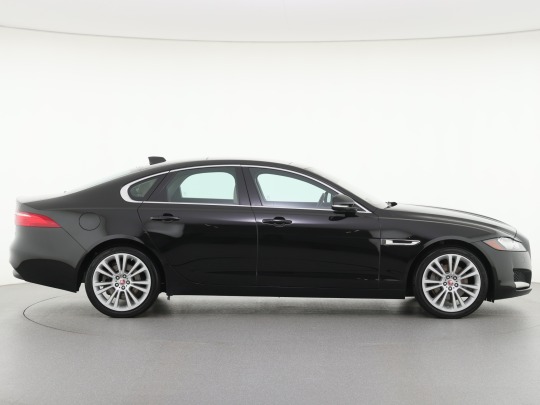


Here’s a quick spot of the engine and some documentation:
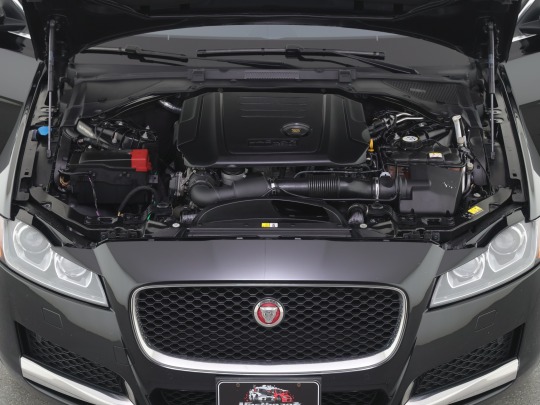

#cars#car photography#cars and bids#doug demuro#cars of tumblr#british cars#jaguar#land rover#jaguar xf#turbocharged#turbo#turbodiesel#luxury#luxury cars#sports cars
24 notes
·
View notes
Text
The 2024 Toyota GR86 TRUENO Edition is Here
Toyota has announced the 2024 Toyota GR lineup – and we’re so excited to show you one of our favorites on the lineup. The 2024 Toyota GR86 TRUENO Edition is all the buzz in the sportscar community, and one of the main reasons is that it commemorates the Toyota AE86’s 40th anniversary. Since this N Charlotte Toyota sportscar has so many cool features, we will make it simple for you.
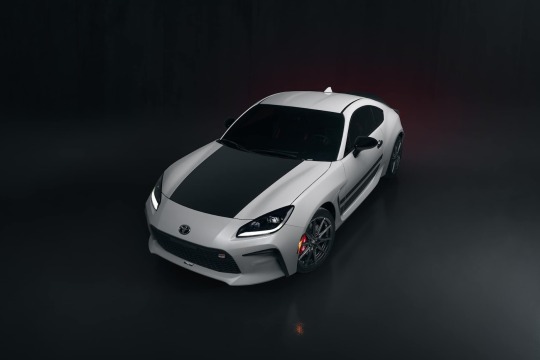
2024 Toyota GR86 Trueno Edition Performance
The 2024 Toyota GR86 TRUENO Edition comes with an upgraded performance package – that comes in both manual and automatic transmissions. You’ll be able to add this performance package to your 2023/2022 Toyota GR86, so don’t worry if you’re not able to get your hands on this particular N Charlotte Toyota. Let’s get into it.
There will be ZF SACHS Dampers and Brembo brakes that come standard on all models.
These features will enhance the consistency of handling, ride comfort, and brake system.
Automatic and, now, manual transmission models are equipped with Active Safety Suite. The system has features like Pre-Collision Braking and Adaptive Cruise Control.
Plus, this Toyota is super light at 2,811 pounds with the aluminum hood, front fenders, and roof panel – making it one of the lightest sports cars on the market.
The naturally aspirated 2.4-liter FA-24 engine has 228 horsepower and 184 lb.-ft. of torque. This makes this N Charlotte Toyota go from 0-60 in just 6.1 seconds for the 6-speed manual transmission and 6.6 seconds for the six-speed electronically controlled automatic transmission.
Finally, you can go into track mode with the push of a button and switch off vehicle stability control.

What does the 2024 Toyota GR86 TRUENO Edition interior and exterior look like?
As mentioned earlier, this N Charlotte Toyota sportscar is an homage to the Toyota AE86, which is very popular in the anime and manga community because of the anime ‘Initial D’. If you don’t know – although you should – Initial D is about a character named Takumi Fujiwara and his rise to being a downhill racing hero in his Toyota AE86. Since the anime is so well known, the Toyota AE86 has been coined the ‘initial D car’. Now, let’s get into what the modern initial D car will look like when you first take a look:
To start with a bang, it will come with a number plate that marks the 2024 Toyota GR86 TRUENO Edition.
It comes with a black-wrapped hood, black TRUENO Edition side panels, and a black duckbill spoiler.
As a tribute to the 1980s model, this N Charlotte Toyota sports car will have a ‘TRUENO Edition’ badge on the front bumper lip and rear decklid.
Also, other accents this ride will have are black metallic 18-inch, 10-spoke aluminum alloy wheels with black door handles and mirror caps.
This is what you’ll step into:
Ultrasuede sport seats that are trimmed with red leather, a red-stitched shift boot, and a leather-wrapped steering wheel.
‘TRUENO Edition’ shift knob and all-weather floor mats.
Finally, an 8-inch touchscreen has Apple CarPlay and Android Auto. Those features are complemented with 8 premium speakers to rock out to on your drive.

2024 Toyota GR86 Trueno Edition Price
We don’t have the exact MSRP of the 2024 Toyota GR68 TRUENO Edition, but we can guesstimate that it will be around $35k-40k because the 2023 Toyota GR86’s starting price is $28,400. And with all the special features and it being limited, there will be an obvious bump in the price.

Stop by Toyota of N Charlotte
If you want to get behind the wheel of this sports car, then stop by Toyota of N Charlotte! Also, stay posted on our social media for any updates about this ride. We’re located at 13429 Statesville Road. Take exit 23 off I-77 in Huntersville.
#ToyotaofNorthCharlotte#Toyota#sportscar#Best sportscar#ToyotaGr86#2024 Toyota GR86 TRUENO Edition#Toyota sportscar
2 notes
·
View notes
Text
4 reasons to get the 2024 Toyota GR86 TRUENO Edition
Toyota is revving its engines for the 2024 Toyota GR lineup - and a new trim is being added to the 2024 Orlando Toyota GR86 lineup: the TRUENO Edition (it means ‘thunder’ in Spanish). Many Toyota fans are excited about this trim because it celebrates its throwback design - the Toyota AE86 from the 1980s. But, what does this trim have that makes it so special? We’re going to make it simple for you.
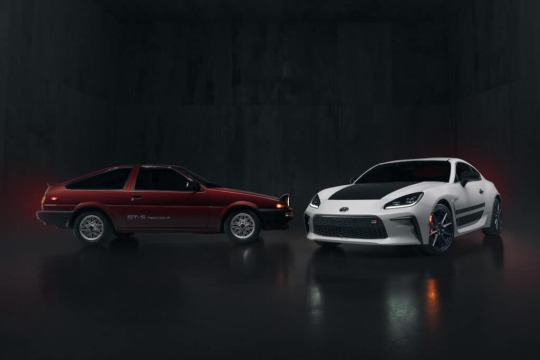
What we love about the 2024 Toyota GR86 Trueno Edition
#1: The design – and its throwback features
The Toyota GR86 TRUENO Edition features retro two-toned paint and ‘TRUENO Edition’ badging. As said earlier, it is styled like the Toyota AE86 as an homage to its 40th anniversary. The Toyota AE86 was a part of the 5th generation of Toyota Corollas from 1984 to 1987 and showcased sporty liftback styling, pop-up headlights, and an angular hood. But, it also has a modern look with its 10-spoke 18-inch black metallic wheels, a black duckbill spoiler, the black TRUENO graphics on the side panels, and two paint colors to choose from - Halo or Track bRed.
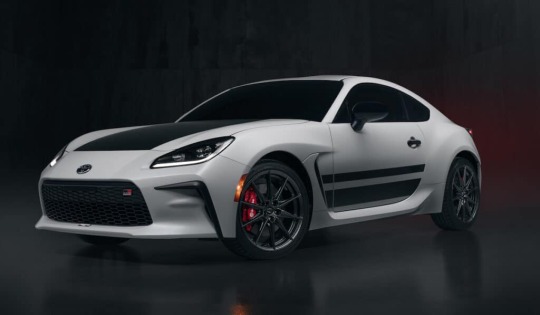
#2 - See what’s inside
We talked about the exterior – now it’s time to go inside this Orlando Toyota’s cockpit. When you go inside you’ll see that it is extremely comfortable and easy to manage with the low-slung, driver-centric layout with the push-start button, 8-inch touchscreen audio system with 8 premium speakers. You’re going to be sitting in Ultrasuede sport seats with red leather, a leather-wrapped steering wheel, special all-weather floor mats with ‘TRUENO’ badging, and red-stitched shift gear.
Since the beginning of time, Toyota has been all about safety – and it doesn’t stop at this Orlando Toyota sportscar. It comes standard with Active Safety Suite with Pre-Collision Braking System, Pre-Collision Throttle Management, Adaptive Cruise Control, Lead Vehicle Start Alert, Lane Departure Warning with Sway Warning, and Automatic High Beams.
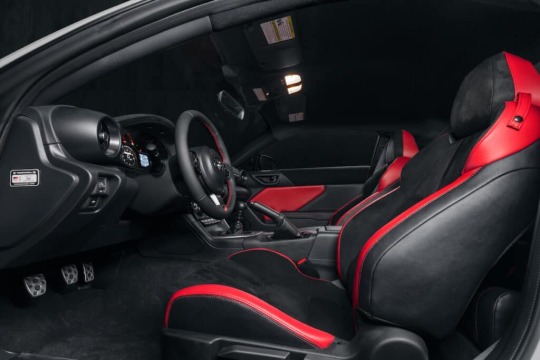
#3 - The speed.
Toyota has never failed when it comes to reliability - and if you want to go 0-60 mph in just 6.6 seconds? You’ll be able to with the 2024 Toyota GR86 TRUENO Edition. This Orlando Toyota sportscar can do this with its naturally aspirated 2.4L FA-24 engine – the horsepower is 228 and the torque is at 184 lb.-ft. It also has rear-wheel drive and comes in both a 6-speed manual and a 6-speed automatic transmission.
The 2024 Toyota GR86 TRUENO Edition has special perks – and even if you aren’t able to get it on your hands, you can add it to any GR86 year and/or trim. The special performance package includes ZF SACHS Dampers and Brembo brakes that offer maximized performance. This new package ensures firm and stable steering, maximized ground contact, and a quieter cabin.

#4 - The NASA membership
The 2024 Toyota GR86 TRUENO Edition comes with a complimentary one-year membership to the National Auto Sport Association – which makes your experience even better. With this membership, the 860 GR86 TRUENO Edition owners (yes we said 860) will be able to receive discounts on NASA-sanctioned events and other benefits – like one free High-Performance Driving Event.
Channel the Initial D car in this new Toyota special edition
Not only Toyota sportscar fans are excited about this trim being added to the Orlando Toyota GR86 lineup - but also anime fans. Initial D is a manga-turned-anime that focuses on the evolution of Takumi Fujiwara where he becomes a downhill racing hero in a Toyota AE86 – which the 2024 Toyota GR86 TRUENO Edition takes stylistic cues from. So, the car has been coined the name ‘initial D car’.
See a new 2024 Toyota GR86 Trueno Edition in person
Ready to make this Orlando Toyota yours? Stay tuned – we’ll keep you updated if you follow us on social media. You can also call Toyota of Orlando to get more info and arrival dates at (407)298-4500. We’re conveniently located just off I-4 across from the Mall at Millenia if you want to swing by!
2 notes
·
View notes
Text
8 Speed ZF Transmission Problems: A Comprehensive Guide!
The ZF 8-speed transmission is one of the most advanced and widely used automatic transmissions in the world.
It is found in many vehicles from different manufacturers, such as BMW, Audi, Jaguar, Land Rover, Dodge, Jeep, and more.
However, this transmission is not without its flaws.
Many users have reported various problems with the ZF 8-speed transmission, such as hard shifts, delayed…

View On WordPress
#aggressive driving habits#Audi#Automatic transmission#BMW#common problems#compatibility#complex#Cost#Dodge#expensive#harsh shifting#Jaguar#Jeep#Land Rover#lifespan#performance gains#proper maintenance#Reliable#shuddering#slipping#upgrade#warranty implications#ZF 8-speed transmission
1 note
·
View note
Text
EV Powertrain Market Latest Advancements And Business Opportunities up to 2032
The size of the worldwide EV powertrain market which is estimated at US$ 10,470.6 million in 2022, is anticipated to register a CAGR of 24% from 2023 to 2033. By following this impressive growth rate the total valuation is anticipated to reach US$ 112,036 million by the end of 2033.
EV powertrain refers to the components that are responsible for generating and transmitting power in electric vehicles. It includes the electric motor, battery pack, power electronics, and transmission system. The growth of EV powertrain is directly linked to the adoption of electric vehicles.
The increasing demand for electric buses and trucks is also expected to drive the growth of the electric powertrain market. Electric buses and trucks require a more powerful and efficient powertrain system to support their heavy-duty operations.
Since conventional fuel cars are anticipated to become less common in the next years, EVs are the way of the future automobile industry. In addition, the adoption of e-mobility and resistance to transportation powered by internal combustion engines are growing and promoting the EV powertrain market opportunities. Moreover, the introduction of EV portfolios and anticipated investments in the EV industry are likely to speed up the changeover.
Key Takeaways
Owing to the presence of many key players in the United States, currently, this country leads the global market in sales of EV powertrains. As it generated a revenue of around US$ 1,057.5 million, it was figured out to have captured 10.1% of the global market.
Germany led the European region in the production of EV powertrains by generating revenue of around US$ 1,005 million in the year 2022. This value was nearly 9.6% of the revenue generated globally, making it the second leading region followed by the United States.
However, the United Kingdom has come into the picture these days for its remarkable increase in demand for EV powertrains. Based on the global EV powertrain market statistics, the United Kingdom is poised to register a 19.6% CAGR over the forecast years.
In the Asia Pacific region, China leads in production as well as the supply of EV powertrains around the world. This country is further projected to hold the dominant position in the coming days by registering a growth rate of 21.3% through 2033.
Contrarily, India remains the most notable region for witnessing rapid expansion in the adoption of EV powertrains these years. With an annual growth rate of 25.4%, the sales of EV powertrains in India are poised to grow faster than in other countries.
Among the different types of components, motors generate the maximum share of the revenue generated by the overall market. The motor segment is anticipated to contribute US$ 51,312.5 million of the total revenue share of the global EV powertrain market in 2033.
Competitive Landscape for the Market
The top 10 global ev powertrain manufacturers are Robert Bosch GmbH, Continental AG, Magna International Inc., Mitsubishi Electric Corporation, ZF Friedrichshafen AG, BorgWarner Inc., Valeo SE, Hitachi Automotive Systems, NXP Semiconductors.
The top EV powertrain companies are taking part in M&A activity to solidify their position in the industry that is expanding quickly. For instance, in December 2019, Weichai Power Corporation bought Aradex AG. Dana Inc. followed by acquiring Nordesa Inc.
Recent Developments
In July 2019, LG Electronics and Magna International establish a strategic alliance to develop EVs. The transfer agreement has been formally signed by both firms to establish a unit by the name LG Magna e-powertrain in South Korea.
FEV Europe GmbH is a leader in automobile powertrain software and component development. It signed an extended contract with electric powertrain supplier Hyliion in July 2021.
In June 2021, a separate powertrain production division was launched by Xos. Inc. which is an electric class 5-8 vehicle manufacturer. In the off-highway, commercial, and industrial segments, the new subsidiary is expected to provide Xos, and powertrain technologies, besides designing and integrating experience with other OEMs.
For more information: https://www.futuremarketinsights.com/reports/ev-powertrain-market
0 notes
Photo



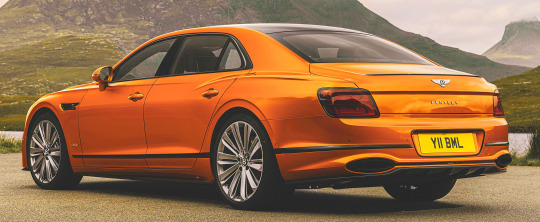
Bentley Flying Spur Speed, 2022. A new, driver focused, version of Bentley’s saloon that will be one of the last cars to use the VW Group W12 engine. The 626bhp 6.0-litre twin turbocharged motor provides a top speed of 207mph (333 km/h) and 0-60 mph of 3.7 secs (100 km/h in 3.8 seconds). Features include electronic all wheel steering, all wheel drive with Torque Vectoring and 8-speed ZF dual-clutch transmission that pre-selects the next gear, shortening the interruption of torque to the wheels. Maximum speed is reached in 6th gear, with the overdrive gears (7th and 8th) used for economic grand touring.
#Bentley#Bentley Flying Spur Speed#W12#sports saloon#luxury saloon#2022#new cars#last of the line#all wheel drive#Torque Vectoring#twin turbo#dual clutch
260 notes
·
View notes
Text
President Trump Delivers Remarks to NASA SpaceX Group After Successful Launch – 5:00pm ET Livestream…
President Trump Delivers Remarks to NASA SpaceX Group After Successful Launch – 5:00pm ET Livestream…
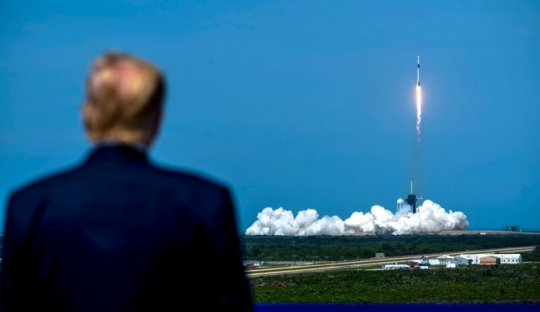
Posted originally on The Conservative Tree House on May 30, 2020 by sundance
After the successful manned launch of the NASA SpaceX mission to the International Space Station President Trump is scheduled to deliver remarks to the audience at Kennedy Space Center in Cape Canaveral, Florida. Anticipated start time 5:00pm ET.
UPDATE: Video and Transcript Added
[youtube=https://www.youtube.com/watch…
View On WordPress
#A4#AI#AI Anchor#AI Computers#Artificial Intelligence#Astronomy#Blue Origin#BMW ZF&039;s 8-Speed Auto transmission#Bremsstrahlung#Carbon base life#Cascadia Subduction Zone#Cern#Chemistry#Chernobyl#Complexity#computer viruses#Computers#Constructive interference#Copenhagen interpretation#Crew Dragon#Crew Dragoon#CSZ#Dark Energy#Dark matter#Destructive interference#DNA#Drones#E8 Lattice#earthquakes#Eclipse
0 notes
Video
youtube
First Look: The New Aston Martin V12 Vantage
For fifteen years the V12 Vantage has boldly represented Aston Martin’s passion for performance. Fast and fierce in equal measure, successive iterations of these great cars have formed an iconic bloodline. One built around the premise of fitting the most compact and driver-focused model with the largest and most potent series production engine. With this unique lineage nearing its end, Aston Martin is proud to introduce the fastest, fiercest and most dynamically accomplished of them all; the new V12 Vantage.
With production of the V12 Vantage strictly limited to 333 examples globally, this final edition celebrates the end of an epic era in fitting style. The ultimate expression of extreme performance and driver-focused thrills, this remarkable machine mixes blistering straight-line speed and scintillating handling with spectacular looks and enviable exclusivity: An extremely enticing proposition.
So enticing, that since V12 Vantage was confirmed in December last year, Aston Martin have seen unprecedented demand for this future icon with all examples sold ahead of release and an oversubscribed register of interest eagerly waiting in the wings.
The engine is the heart of every Aston Martin, but never more so than in this, the fastest and most powerful Vantage ever built. Developing 700PS at 6500 rpm and 753Nm of torque from just 1800rpm to 6000rpm, the quad-cam 60-deg 5.2-litre V12 offers an intoxicating combination of magnificent low and mid-range muscularity with searing top-end power. With a top speed of 200mph, V12 Vantage reaches to 0-60 in just 3.4 seconds. Thanks to the propulsive efforts of this magnificent powerplant – and extensive use of weight-saving materials throughout the car – the V12 Vantage has a power-to-weight ratio of 390PS-per-ton; an increase of more than 20% compared to the V8 powered Vantage.
These weight saving measures include carbon fiber front bumper, clamshell bonnet, front fenders and side sills, composite rear bumper and deck lid, lightweight battery and a special center-mounted twin-exit exhaust system. Tuned to ensure the V12 Vantage has a voice to match its looks and performance, this new exhaust system is made from lightweight 1mm stainless-steel, saving some 7.2kg compared with the system fitted to the Vantage.
The power is fed through a ZF 8-speed automatic transmission and mechanical Limited-Slip Differential (LSD) mounted at the rear of the car. The V12 Vantage receives a unique transmission calibration to enhance shift speeds and driver interaction, with learnings taken from the V12 Speedster and Vantage F1 Edition models. This specially calibrated software delivers a level of shift refinement and usability which is beyond that seen on dual clutch gearboxes. The transmission’s adaptive software is designed to gauge the conditions the car is operating in, along with the demands the driver is making, to ensure the car is in exactly the right gear at the right time providing a truly connected driving experience.
Like its celebrated forebears the new V12 Vantage is focused on delivering a dynamic driving experience that compliments its unmistakable engine performance and character, while ensuring the driver truly remains at the center of the driving experience. To achieve this, the car is equipped with a new adaptive damping suspension system including new anti-roll bars, bushes, and spring and damper assemblies.
Production of the V12 Vantage – the order book for which is already closed due to unprecedented demand - is due to commence in Q1 of 2022, with first deliveries scheduled to begin during Q2 2022.
23 notes
·
View notes
Photo
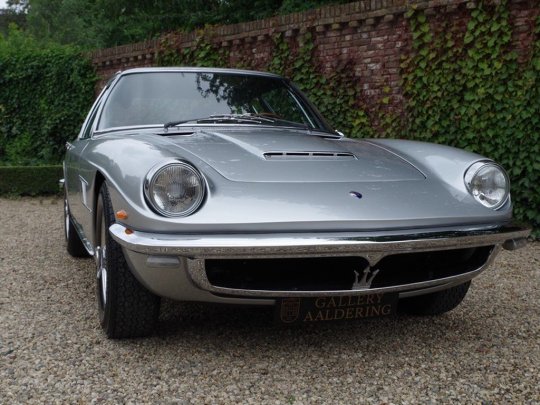
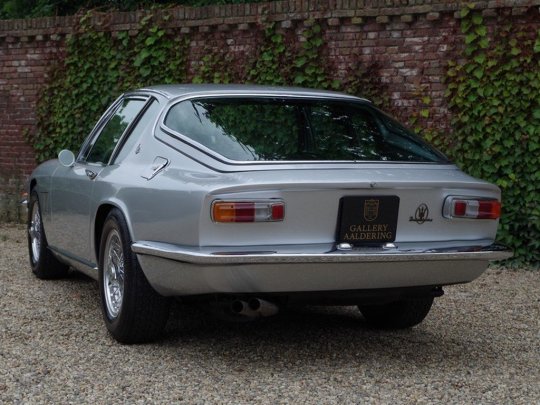
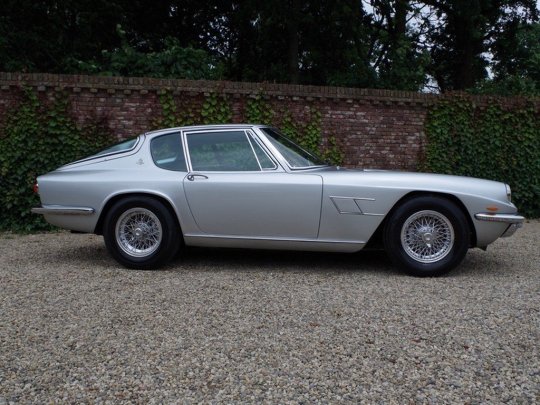

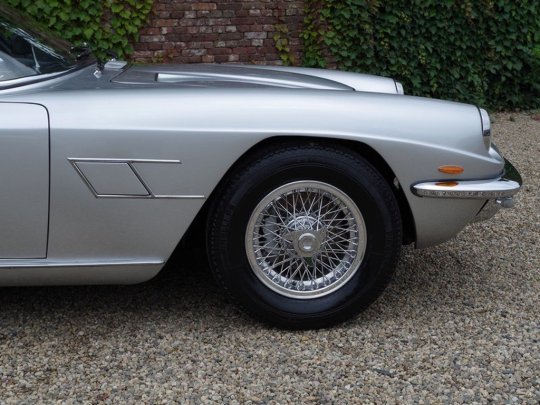
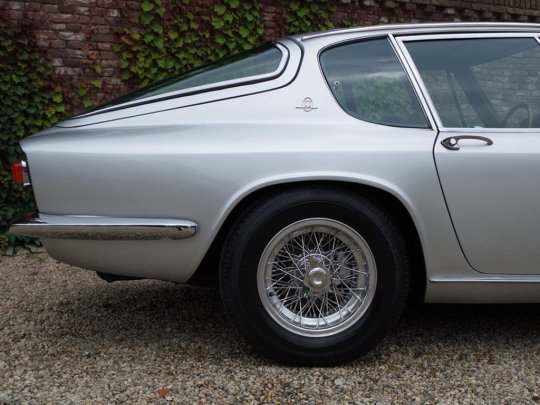
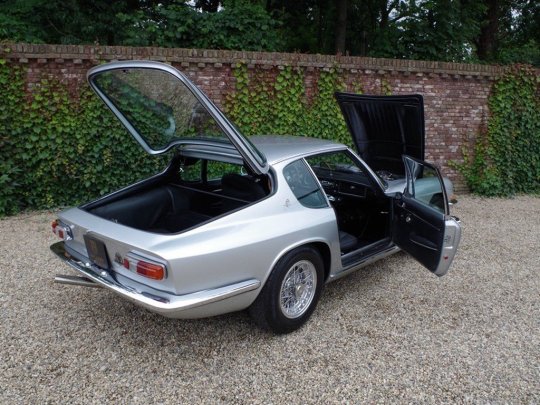
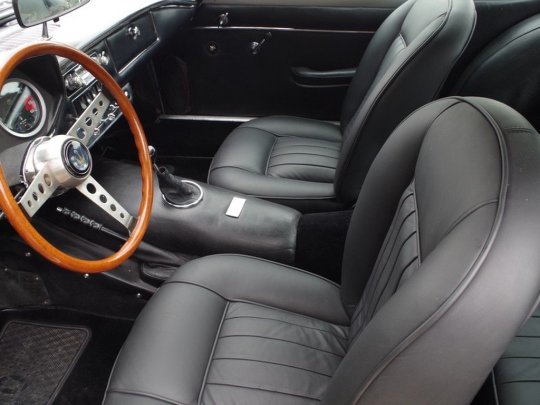
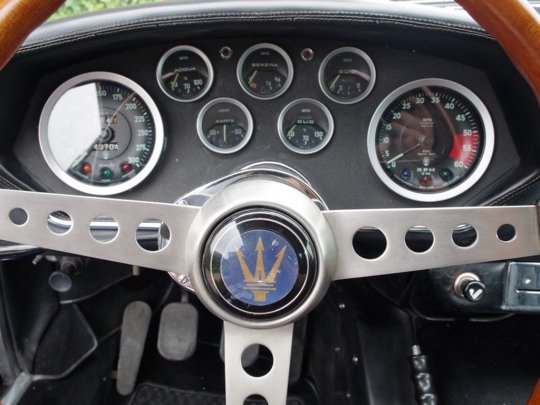
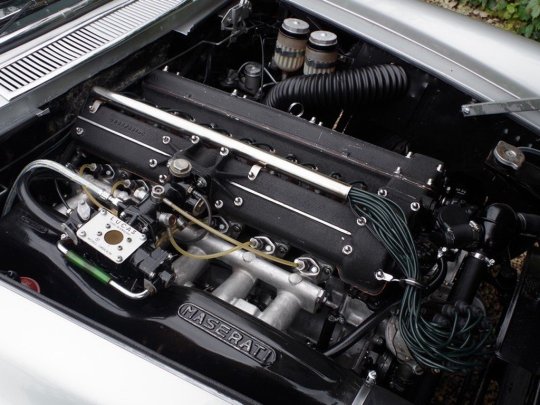
Maserati Mistral
The Maserati Mistral, named after a cold northerly wind of southern France, was the successor to the iconic 3500 GT, it was also the first in a series of classic Maseratis to be given the name of a wind. It was offered both in Coupe and Spyder form. 828 coupés and 125 spyders were built in total. Maggiora of Turin supplied both bodies under contract. The Mistral is the last model from the "Casa del Tridente" or “House of the Trident” to have the famous straight six cylinder, twin-spark, double overhead cam engine, as fitted to the Maserati 250F Grand Prix cars that won 8 Grand Prix between 1954 and 1960 and one F1 World Championship in 1957 driven by Juan Manuel Fangio. The engine also featured hemispherical combustion chambers and was fed by a Lucas indirect fuel injection system which was novelty at the time for Italian car manufacturers. Although the Lucas fuel injection system enhances performance, quite a few owners, especially in the U.S. have converted their cars to Weber carburetors due to difficulties in tuning the system properly, the cost being a loss of resale value due to non-originality. The Lucas fuel system is reliable, and needs little attention when rebuilt and initially adjusted by an expert machinist or master mechanic. Sometimes Bosch pumps are used; although not stock, they offer availability and parts, and are not visible due to their location. Regular use of the automobile prolongs the life of the many Lucas "rubber" seals, while also preventing blockages in the injector's. Several American owners have reported a significant performance increase when changing over from Weber carburetor's to the correct (mechanical) Lucas fuel injection. Maserati subsequently moved on to V8 engines for their later production cars to keep up with the demand for ever more powerful machines. There were three engine variants fitted to the Mistral; 3500, 3700 and 4,000 cc. The most sought after derivative is the 4000 cc model. Only the earliest of the Mistrals were equipped with the 3500 cc engine. Unusually, the body was offered in both aluminum and, from 1967, in steel but no one is quite sure as to how many of each were built. Use of the aluminum body panels had no effect on the performance of the Mistral. The mixture of the aluminum body on a steel substructure can lead to corrosion due to the dissimilar metals. The automobile was standard with a five speed transmission from ZF and also had four wheel solid disc brakes. As was Maserati's practice at the time the front suspension was independent while the rear made do with a solid axle. Speed for the 3.7 liter engine and the 4.0 liter engine was around 7 seconds or a little better and the top speed was around 140 mph (225 km/h) to 145 mph (233 km/h). When leaving the factory the Maserati Mistral originally fitted Pirelli Cinturato 205VR15 tyres (CN72) on Borrani wire wheels. 3500 engine was mounted only in a spyder model, with just 12 made, alongside with 76 of Spyder 3.7 and 37 of Spyder 4.0 versions. Of all spyders 20 were right hand drive models. The body which had been designed by Pietro Frua was first shown in a preview at the Salone Internazionale dell'Automobile di Torino in November 1963. The Maserati Mistral is generally considered as one of the most beautiful Maseratis of all time. It is also often confused to the very similar looking but larger and more powerful AC Frua, which was a Frua design as well.
54 notes
·
View notes
Text

The 2021 Dodge Challenger SRT Hellcat Widebody. I don’t think it was a Redeye model, but it was for sure the best looking Challenger that I’ve seen in a long time. With 717-807 horsepower at bay (depending on the Hellcat model upgrade) and 707 pound feet of torque produced by a 376 cubic inch 6.2 Liter HEMI Supercharged V8 engine mated to a 8-Speed ZF 8HP automatic transmission, it launches this true streetbeast 0-60 in 3.6 seconds and burns the quarter mile in 11.8 seconds (10.8 seconds claimed by Dodge) at 125 mph. This is one American Muscle Car that redefines and superceeds any previous production automobile model in its class. They say “Mopar or no car”, I’d say Hell yeah!! 😈
⭐️ @ detroitmusclecargarage
#dodge#mopar#mopardaily#muscle cars#americanmuscle#musclecarpics#musclecarfamily#musclecarzone#Hellcat#srt#challenger#streetracing#streetbeast#street machine#burnout#burntrubber#6.2 hemi#Hemi#moparlove#moparornocar#moparperformance#moparnation#gearhead#greasemonkey#autogarage#torque#horsepower#detroitpower#detroitmuscle#detroitmade
78 notes
·
View notes
Note
Panzer IV
The Panzerkampfwagen IV (Pz.Kpfw. IV), commonly known as the Panzer IV, was a German medium tank developed in the late 1930s and used extensively during the Second World War. Its ordnance inventory designation was Sd.Kfz. 161.
Panzerkampfwagen IV
Sd.Kfz. 161/VK 622 (Ausf. A)
Panzermuseum Munster 2010 0128.JPG
A Panzer IV Ausf. G "413" in desert colours, bearing the palm tree insignia of the Afrika Korps, "Friederike" script written on the gun barrel near the mantlet. This tank was on display at the Deutsches Panzermuseum.
Type Medium tank
Place of origin Nazi Germany
Service history
In service 1939–1945 (Nazi Germany)
1954[1]–1967 (Syria)
Used by Nazi Germany
Romania
Turkey
Hungary
Bulgaria
Italy
Finland
Spain
Croatia
Syria
Wars World War II, 1948 Arab–Israeli War, Six-Day War
Production history
Designer Krupp
Designed 1936
Manufacturer Krupp, Vomag, Nibelungenwerk
Unit cost ≈103,462 Reichsmarks and 115,962 Reichmarks With 7,5 cm KwK 40 (L/43)[2]
Produced 1936–1945
No. built ≈8,553 of all tank variants[3]
Variants StuG IV, Jagdpanzer IV, Brummbär/Sturmpanzer IV, Nashorn, Wirbelwind, Ostwind
Specifications (Pz. IV Ausf. H, 1943[5])
Mass 25.0 tonnes (27.6 short tons; 24.6 long tons)
Length 5.92 metres (19 ft 5 in)
7.02 metres (23 ft 0 in) gun forward
Width 2.88 m (9 ft 5 in)
Height 2.68 m (8 ft 10 in)
Crew 5 (commander, gunner, loader, driver, radio operator/bow machine-gunner)
Armor Hull front: 80 mm (3.1 in)
Hull side (upper and lower): 30 mm (1.2 in)
Hull rear (upper and lower): 20 mm (0.79 in)
Hull roof and floor: 10 mm (0.39 in)
Schürzen: 5 mm (0.20 in) to 8 mm (0.31 in)[4]
Turret front: 50 mm (2.0 in)
Turret side and rear: 30 mm (1.2 in)
Turret roof: 10 mm (0.39 in)
Main
armament
7.5 cm (2.95 in) KwK 40 L/48 main gun (87 rounds)
Secondary
armament
2 × 7.92 mm MG 34 machine guns (3,150 rounds)
Engine Maybach HL120 TRM 12-cylinder gasoline engine
300 PS (296 hp, 220 kW)
Power/weight 12 PS (8.8 kW) / tonne
Transmission (Synchromesh ZF SSG 77) 6 forward and 1 reverse ratios
Suspension Leaf spring
Fuel capacity 470 l (120 US gal)
Operational
range
200 km (120 mi)
Maximum speed 38 to 42 km/h (24 to 26 mph) maximum, 25 km/h (16 mph) max sustained road speed 16 km/h (9.9 mph) off road
The Panzer IV was the most numerous German tank and the second-most numerous German armored fighting vehicle of the Second World War, with some 8,500 built. Its chassis was also used as the base for many other fighting vehicles, including the Sturmgeschütz IV assault gun, the Jagdpanzer IV tank destroyer, the Wirbelwind self-propelled anti-aircraft gun, and the Brummbär self-propelled gun.
The Panzer IV saw service in all combat theaters involving Germany and was the only German tank to remain in continuous production throughout the war. It was originally designed for infantry support, while the similar Panzer III was to fight armoured fighting vehicles. However as the Germans faced the formidable T-34, the Panzer IV had more development potential, with a larger turret ring to mount more powerful guns, so the two switched roles. It received various upgrades and design modifications, intended to counter new threats, extending its service life. Generally, these involved increasing the armor protection or upgrading the weapons, although during the last months of the war, with Germany's pressing need for rapid replacement of losses, design changes also included simplifications to speed up the manufacturing process.
The Panzer IV was partially succeeded by the Panther medium tank, which was introduced to counter the Soviet T-34, although it continued to be a significant component of German armoured formations to the end of the war. It was the most widely exported tank in German service, with around 300 sold to Finland, Romania, Spain and Bulgaria. After the war, Syria procured Panzer IVs from France and Czechoslovakia, which saw combat in the 1967 Six-Day War. 8,553 Panzer IVs of all versions were built during World War II, a production run in Axis forces only exceeded by the StuG III assault gun with 10,086
vehicles.
Development history
Origins
The Panzer IV was the brainchild of the German general and innovative armored warfare theorist Heinz Guderian.[6] In concept, it was intended to be a support tank for use against enemy anti-tank guns and fortifications.[7] Ideally, each tank battalion in a panzer division was to have three medium companies of Panzer IIIs and one heavy company of Panzer IVs.[8] On 11 January 1934, the German army wrote the specifications for a "medium tractor", and issued them to a number of defense companies. To support the Panzer III, which would be armed with a 37-millimetre (1.46 in) anti-tank gun, the new vehicle would have a short-barreled, howitzer-like 75-millimetre (2.95 in) as its main gun, and was allotted a weight limit of 24 tonnes (26.46 short tons). Development was carried out under the name Begleitwagen ("accompanying vehicle"),[9] or BW, to disguise its actual purpose, given that Germany was still theoretically bound by the Treaty of Versailles ban on tanks.[10] MAN, Krupp, and Rheinmetall-Borsig each developed prototypes,[8] with Krupp's being selected for further development.[11]
The chassis had originally been designed with a six-wheeled Schachtellaufwerk interleaved-roadwheel suspension (as already adopted for German half-tracks), but the German Army amended this to a torsion bar system. Permitting greater vertical deflection of the roadwheels, this was intended to improve performance and crew comfort both on- and off-road.[11][12] However, due to the urgent requirement for the new tank, neither proposal was adopted, and Krupp instead equipped it with a simple leaf spring double-bogie suspension, with eight rubber-rimmed roadwheels per side.
The prototype had a crew of five; the hull contained the engine bay to the rear, with the driver and radio operator, who doubled as the hull machine gunner, seated at the front-left and front-right, respectively. In the turret, the tank commander sat beneath his roof hatch, while the gunner was situated to the left of the gun breech and the loader to the right. The torque shaft ran from the rear engine to the transmission box in the front hull between the driver and radio operator. To keep the shaft clear of the rotary base junction, which provided electrical power to the turret including the motor to turn it, the turret was offset 66.5 mm (2.62 in) to the left of the chassis center line, and the engine was moved 152.4 mm (6.00 in) to the right. Due to the asymmetric layout, the right side of the tank contained the bulk of its stowage volume, which was taken up by ready-use ammunition lockers.[11]
Accepted into service under the designation Versuchskraftfahrzeug 622 (Vs.Kfz. 622), "experimental motor vehicle 622",[10] production began in 1936 at Fried. Krupp Grusonwerk AG factory at Magdeburg.[13]
Ausf. A to Ausf. F1
Panzer IV Ausf. A in 1939
Panzer IV Ausf. C 1943
The first mass-produced version of the Panzer IV was the Ausführung A (abbreviated to Ausf. A, meaning "Variant A"), in 1936. It was powered by a Maybach HL108 TR, producing 250 PS (183.87 kW), and used the SGR 75 transmission with five forward gears and one reverse,[14] achieving a maximum road speed of 31 kilometres per hour (19.26 mph).[15] As main armament, the vehicle mounted the short-barreled, howitzer-like 75 mm (2.95 in) Kampfwagenkanone 37 L/24 (7.5 cm KwK 37 L/24) tank gun, which was a low-velocity weapon mainly designed to fire high-explosive shells.[16] Against armored targets, firing the Panzergranate (armor-piercing shell) at 430 metres per second (1,410 ft/s) the KwK 37 could penetrate 43 millimetres (1.69 in), inclined at 30 degrees, at ranges of up to 700 metres (2,300 ft).[17] A 7.92 mm (0.31 in) MG 34 machine gun was mounted coaxially with the main weapon in the turret, while a second machine gun of the same type was mounted in the front plate of the hull.[11] The main weapon and coaxial machine gun were sighted with a Turmzielfernrohr 5b optic while the hull machine gun was sighted with a Kugelzielfernrohr 2 optic.[18] The Ausf. A was protected by
14.5 mm (0.57 in) of steel armor on the front plate of the chassis, and 20 mm (0.79 in) on the turret. This was only capable of stopping artillery fragments, small-arms fire, and light anti-tank projectiles.[19] A total of 35 A versions were produced.[10]
The 300 horsepower Maybach HL 120TRM engine used in most Panzer IV production models.
PzKpfw IV Ausf. D
In 1937 production moved to the Ausf. B.[10] Improvements included the replacement of the original engine with the more powerful 300 PS (220.65 kW) Maybach HL 120TR, and the transmission with the new SSG 75 transmission, with six forward gears and one reverse gear. Despite a weight increase to 16 t (18 short tons), this improved the tank's speed to 42 kilometres per hour (26.10 mph).[20] The glacis plate was augmented to a maximum thickness of 30 millimetres (1.18 in),[19] while a new driver's visor was installed on the straightened hull front plate, and the hull-mounted machine gun was replaced by a covered pistol port and visor flap.[20] The superstructure width and ammunition stowage were reduced to save weight.[20] A new commander's cupola was introduced which was adopted from the Panzer III Ausf. C.[20] A Nebelkerzenabwurfvorrichtung (smoke grenade discharger rack) was mounted on the rear of the hull starting in July 1938[20] and was back fitted to earlier Ausf. A and Ausf. B chassis starting in August 1938.[21] Forty-two Panzer IV Ausf. Bs were manufactured.[10]
The Ausf. C replaced the B in 1938.[10][22] This saw the turret armor increased to 30 mm (1.18 in), which brought the tank's weight to 18.14 t (20.00 short tons).[22] After assembling 40 Ausf. Cs, starting with chassis number 80341, the engine was replaced with the improved HL 120TRM. The last of the 140 Ausf. Cs was produced in August 1939.
Production changed to the Ausf. D; this variant, of which 248 vehicles were produced, reintroduced the hull machine gun and changed the turret's internal gun mantlet to a 35 mm (1.38 in)[23] thick external mantlet.[22] Again, protection was upgraded, this time by increasing side armor to 20 mm (0.79 in).[16] As the German invasion of Poland in September 1939 came to an end, it was decided to scale up production of the Panzer IV, which was adopted for general use on 27 September 1939 as the Sonderkraftfahrzeug 161 (Sd.Kfz. 161).[10]
In response to the difficulty of penetrating the thick armor of British infantry tanks (Matilda and Matilda II) during the Battle of France, the Germans had tested a 50 mm (1.97 in) gun — based on the 5 cm Pak 38 anti-tank gun — on a Panzer IV Ausf. D. However, with the rapid German victory in France, the original order of 80 tanks was cancelled before they entered production.[24]
In October 1940, the Ausf. E was introduced. This had 30 millimetres (1.18 in) of armor on the bow plate, while a 30-millimetre (1.18 in) appliqué steel plate was added to the glacis as an interim measure. A new driver's visor, adopted from the Sturmgeschütz III was installed on the hull front plate.[25] A new commander's cupola, adopted from the Panzer III Ausf. G, was relocated forward on the turret eliminating the bulge underneath the cupola.[26] Older model Panzer IV tanks were retrofitted with these features when returned to the manufacturer for servicing. 206 Ausf. Es were produced between October 1940 and April 1941.[3]
The short-barreled Panzer IV Ausf. F1.
In April 1941, production of the Panzer IV Ausf. F started. It featured 50 mm (1.97 in) single-plate armor on the turret and hull, as opposed to the appliqué armor added to the Ausf. E,[22] and a further increase in side armor to 30 mm (1.18 in).[27] The main engine exhaust muffler was shortened and a compact auxiliary generator muffler was mounted to its left.[25] The weight of the vehicle was now 22.3 tonnes (24.6 short tons), which required a corresponding modification of track width from 380 to 400 mm (14.96 to 15.75 in) to reduce ground pressure. The wider tracks also facilitated the fitting of track shoe "ice sprags", and the rear idler wheel and front sprocket were modified.[28] The
designation Ausf. F was changed in the meantime to Ausf. F1, after the distinct new model, the Ausf. F2, appeared. A total of 471 Ausf. F (later temporarily called F1) tanks were produced from April 1941 to March 1942.[3]
Ausf. F2 to Ausf. J
On 26 May 1941, mere weeks before Operation Barbarossa, during a conference with Hitler, it was decided to improve the Panzer IV's main armament. Krupp was awarded the contract to integrate again the 50 mm (1.97 in) Pak 38 L/60 gun into the turret. The first prototype was to be delivered by 15 November 1941.[29] Within months, the shock of encountering the Soviet T-34 medium and KV-1 heavy tanks necessitated a new, much more powerful tank gun.[30] In November 1941, the decision to up-gun the Panzer IV to the 50-millimetre (1.97 in) gun was dropped, and instead Krupp was contracted in a joint development to modify Rheinmetall's pending 75 mm (2.95 in) anti-tank gun design, later known as 7.5 cm Pak 40 L/46.
Because the recoil length was too great for the tank's turret, the recoil mechanism and chamber were shortened. This resulted in the 75-millimetre (2.95 in) KwK 40 L/43.[31] When the new KwK 40 was loaded with the Pzgr. 39 armor-piercing shell, the new gun fired the AP shell at some 750 m/s (2,460 ft/s), a substantial 74% increase over the howitzer-like KwK 37 L/24 gun's 430 m/s (1,410 ft/s) muzzle velocity.[28] Initially, the KwK 40 gun was mounted with a single-chamber, ball-shaped muzzle brake, which provided just under 50% of the recoil system's braking ability.[32] Firing the Panzergranate 39, the KwK 40 L/43 could penetrate 77 mm (3.03 in) of steel armor at a range of 1,830 m (6,000 ft).[33]
The longer 7.5 cm guns were a mixed blessing. In spite of the designers' efforts to conserve weight, the new weapon made the vehicle nose-heavy to such an extent that the forward suspension springs were under constant compression. This resulted in the tank tending to sway even when no steering was being applied, an effect compounded by the introduction of the Ausführung H in March 1943.[34]
The 1942 Panzer IV Ausf. F2 was an upgrade of the Ausf. F, fitted with the KwK 40 L/43 anti-tank gun to counter Soviet T-34 medium and KV heavy tanks.
The Ausf. F tanks that received the new, longer, KwK 40 L/43 gun were temporarily named Ausf. F2 (with the designation Sd.Kfz. 161/1). The tank increased in weight to 23.6 tonnes (26.0 short tons). Differences between the Ausf. F1 and the Ausf. F2 were mainly associated with the change in armament, including an altered gun mantlet, internal travel lock for the main weapon, new gun cradle, new Turmzielfernrohr 5f optic for the L/43 weapon, modified ammunition stowage, and discontinuing of the Nebelkerzenabwurfvorrichtung in favor of turret mounted Nebelwurfgerät.[35] Three months after beginning production, the Panzer IV Ausf. F2 was renamed Ausf. G.[36]
During its production run from March 1942 to June 1943, the Panzer IV Ausf. G went through further modifications, including another armor upgrade which consisted of a 30-millimetre (1.18 in) face-hardened appliqué steel plate welded (later bolted) to the glacis—in total, frontal armor was now 80 mm (3.15 in) thick.[37] This decision to increase frontal armor was favorably received according to troop reports on 8 November 1942, despite technical problems of the driving system due to added weight. At this point, it was decided that 50% of Panzer IV production would be fitted with 30 mm (1.18 in) thick additional armor plates. On 5 January 1943, Hitler decided that all Panzer IV should have 80 mm (3.15 in) frontal armor.[38] To simplify production, the vision ports on either side of the turret and the loader's forward vision port in the turret front were removed, while a rack for two spare road wheels was installed on the track guard on the left side of the hull. Complementing this, brackets for seven spare track links were added to the glacis plate.
For operation in high temperatures, the engine's ventilation was improved by creating slits over the engine deck to the rear of the chassis, and cold
weather performance was boosted by adding a device to heat the engine's coolant, as well as a starter fluid injector. A new light replaced the original headlight and the signal port on the turret was removed.[39] On 19 March 1943, the first Panzer IV with Schürzen skirts on its sides and turret was exhibited.[40] The double hatch for the commander's cupola was replaced by a single round hatch from very late model Ausf. G. and the cupola was up-armored from 50 mm (1.97 in) to 95 mm (3.74 in). In April 1943, the KwK 40 L/43 was replaced by the longer 75-millimetre (2.95 in) KwK 40 L/48 gun, with a redesigned multi-baffle muzzle brake with improved recoil efficiency.[41] The longer L/48 resulted in the introduction of the Turmzielfernrohr 5f/1 optic.[42]
A Panzer IV Ausf H at the Musée des Blindés in Saumur, France, with its distinctive Zimmerit anti-magnetic mine coating, turret skirts, and wire-mesh side-skirts.
The next version, the Ausf. H, began production in June 1943[3] and received the designation Sd. Kfz. 161/2. The integrity of the glacis armor was improved by manufacturing it as a single 80-millimetre (3.15 in) plate. A reinforced final drive with higher gear ratios was introduced.[43] To prevent adhesion of magnetic anti-tank mines, which the Germans feared would be used in large numbers by the Allies, Zimmerit paste was added to all the vertical surfaces of the tank's armor.[44] The turret roof was reinforced from 10-millimetre (0.39 in) to 16-millimetre (0.63 in) and 25-millimetre (0.98 in) segments.[43] The vehicle's side and turret were further protected by the addition of 5-millimetre (0.20 in) hull skirts and 8-millimetre (0.31 in) turret skirts.[4][45] This resulted in the elimination of the vision ports located on the hull side,[43] as the skirts obstructed their view. During the Ausf. H's production run, its rubber-tired return rollers were replaced with cast steel, a lighter cast front sprocket and rear idler wheel gradually replaced the previous components,[43] the hull was fitted with triangular supports for the easily damaged side skirts, the Nebelwurfgeraet was discontinued, and a mount in the turret roof, designed for the Nahverteidigungswaffe, was plugged by a circular armored plate due to initial production shortages of this weapon.[46][47]
These modifications meant that the tank's weight increased to 25 tonnes (27.56 short tons). In spite of a new six-speed SSG 77 transmission adopted from the Panzer III, top speed dropped to as low as 16 km/h (10 mph) on cross country terrain. An experimental version of the Ausf H was fitted with a hydrostatic transmission but was not put into production.[34]
The Ausf. J was the final production model, and was greatly simplified compared to earlier variants to speed construction. This shows an exported Finnish model.
Despite addressing the mobility problems introduced by the previous model, the final production version of the Panzer IV—the Ausf. J—was considered a retrograde from the Ausf. H. Born of necessity, to replace heavy losses, it was greatly simplified to speed production.[48] The electric generator that powered the tank's turret traverse was removed, so the turret had to be rotated manually. The turret traversing mechanism was modified and fitted with a second gear which made hand-operation easier when the vehicle was on sloping terrain.[49] On reasonably level ground, hand operation at 4 seconds to traverse to 12.5° and 29.5 seconds to traverse to 120° was achieved.[49] The resulting space was later used for the installation of an auxiliary 200-litre (53 US gal) fuel tank; road range was thereby increased to 320 km (200 mi),[50] The remaining pistol and vision ports on the turret side hatches were removed, and the engine's radiator housing was simplified by changing the slanted sides to straight sides.[47] Three sockets with screw threads for mounting a 2-ton jib boom crane were welded on the turret roof while the hull roof was thickened from 11-millimetre (0.43 in) to 16-millimetre (0.63 in).[51] In addition, the cylindrical muffler was
replaced by two flame-suppressing mufflers. In June 1944 Wa Prüf 6 had decided that because bomb damage at Panzerfirma Krupp in Essen had seriously jeopardized tank production, all plates which should have been face-hardened for the Panzer IV were instead made with rolled homogeneous armour plate.[51] By late 1944, Zimmerit was no longer being applied to German armored vehicles, and the Panzer IV's side-skirts had been replaced by wire mesh, while the gunner's forward vision port in the turret front was eliminated[52] and the number of return rollers was reduced from four to three to further speed-up production.[53]
In a bid to augment the Panzer IV's firepower, an attempt was made to mate a Schmalturm turret — carrying the longer 75 mm (2.95 in) L/70 tank gun from the developing Panther Ausf. F tank design, and partly developed by Rheinmetall from early 1944 onwards — to a Panzer IV hull. This failed and confirmed that the chassis had reached the limit of its adaptability in both weight and available volume.[48]
Production
Panzer IV production by year[3]
Date Number of vehicles Variant (Ausf.)
1937–1939 262 A – D
1940 290 (-24) D, E
1941 480 (+17) E, F
1942 994 F, G
1943 2,983 G, H
1944 3,125 H, J
1945 ~435 J
Total ~8,569 all
The Panzer IV was originally intended to be used only on a limited scale, so initially Krupp was its sole manufacturer. Prior to the Polish campaign, only 217 Panzer IVs had been produced: 35 Ausf. A; 42 Ausf. B; and 140 Ausf. C; in 1941, production was extended to Vogtländische Maschinenfabrik ("VOMAG") (located in the city of Plauen) and the Nibelungenwerk in the Austrian city of St. Valentin.[3]
In 1941, an average of 39 tanks per month were built; this rose to 83 in 1942, 252 in 1943, and 300 in 1944. However, in December 1943, Krupp's factory was diverted to manufacture the Sturmgeschütz IV and, in the spring of 1944, the Vomag factory began production of the Jagdpanzer IV, leaving the Nibelungenwerk as the only plant still assembling the Panzer IV.[54] With the slow collapse of German industry under pressure from Allied air and ground offensives—in October 1944 the Nibelungenwerk factory was severely damaged during a bombing raid—by March and April 1945, production had fallen to pre-1942 levels, with only around 55 tanks per month coming off the assembly lines.[55]
Panzer IV: comparison of key production features[56]
Version Main gun Superstructure armour
mm (inch) Hull armour
mm (inch) Turret armour
mm (inch) Weight
tonnes (long tons; short tons) Engine Notes
F S R F S R F S R
Ausf. A
VK622 7.5 cm KwK L/24 15 (0.59) 18.4 (18.1; 20.3) Maybach HL 108TR
250 PS (246.6 hp; 183.9 kW) SGR 75 transmission
Ausf. B 30
(1.2) 15
(0.59) 15
(0.59) 30
(1.2) 15
(0.59) 15
(0.59) 30
(1.2) 15
(0.59) 15
(0.59) 18.8 (18.5; 20.7) SSG 75 transmission
Ausf. C 30
(1.2) 15
(0.59) 15
(0.59) 30
(1.2) 15
(0.59) 15
(0.59) 30
(1.2) 15
(0.59) 15
(0.59) 19.0 (18.7; 20.9) Maybach HL 120 TRM
300 PS (300 hp; 220 kW)
Ausf. D 30 + 30 † 20
(0.79) + 20 † 20
(0.79) 30
(1.2) 20
(0.79) 20
(0.79) 30
(1.2) 20
(0.79) 20
(0.79) 20.0 (19.7; 22.0)
Ausf. E 30 + 30 † 20 + 20 † 20 30 + 30 † 20 + 20 † 20 30 20 20 21.0 (20.7; 23.1)
Ausf. F1 50
(2.0) 30
(1.2) 20
(0.79) 50
(2.0) 30
(1.2) 20
(0.79) 50
(2.0) 30
(1.2) 30
(1.2) 22.3 (21.9; 24.6) track width increased from 380 to 400 mm (15 to 16 in)
Ausf. F2 7.5 cm KwK 40 L/43 50 30 20 50 30 20 50 30 30 23.0 (22.6; 25.4) single-chamber, globe, muzzle brake
Ausf. G 50 + 30 † 30 20 50 + 30 † 30 20 50 30 + 8 (0.31)‡ 30 + 8 ‡ 23.5 (23.1; 25.9) multi-baffle muzzle brake
Ausf. H 7.5 cm KwK 40 L/48 80 (3.1) 30 20 80 30 20 50 30 + 8 ‡ 30 + 8 ‡ 25.0 (24.6; 27.6) Zimmerit paste added to vertical surfaces
SSG 77 transmission
Ausf. J 80 30 20 80 30 20 50 30 + 8 ‡ 30 + 8 ‡ 25.0 (24.6; 27.6) electric motor for turret traverse removed, Rolled homogeneous armour, no Zimmerit
† – appliqué armor plate, bolted or welded on
‡ – Schürzen skirts
Export
The Panzer IV was one of the most widely exported German tanks of the Second World War.[57] In 1942, Germany delivered 11 tanks to Romania and 32 to Hungary,
many of which were lost on the Eastern Front between the final months of 1942 and the beginning of 1943 during the battles around Stalingrad, at which the Hungarian and Romanian troops there were almost annihilated by the attacking Soviet forces.[58] Romania received approximately 120 Panzer IV tanks of different models throughout the entire war.[59] To arm Bulgaria, Germany supplied 46[60] or 91[61] Panzer IVs, and offered Italy 12 tanks to form the nucleus of a new Italian Army armored division. These were used to train Italian tank crews while the-then Italian leader Benito Mussolini was deposed shortly after the Allied conquest of Sicily but were then retaken by Germany during its occupation of Italy in mid-1943.[60] The Falangist Spanish government petitioned for 100 Panzer IVs in March 1943 but only 20 were ever delivered by December that same year.[62] Finland bought 30 but only received 15 in 1944 and in the same year a second batch of 62[60] or 72[61] was sent to Hungary (although 20 of these were subsequently diverted to replace German military losses).[61] The Croatian Ustashe Militia received 10 Ausf. F1 and 5 Ausf. G in the autumn of 1944.[63] In total, 297 Panzer IVs of all models were delivered to Germany's allies.[64]
Combat history
A Panzer IV Ausf. E with hits on the turret and the edge of the gun barrel.
The Panzer IV was the only German tank to remain in both production and combat throughout World War II,[65][66] and measured over the entire war it comprised 30% of the Wehrmacht's total tank strength.[67] Although in service by early 1939, in time for the occupation of Czechoslovakia,[68] at the start of the war the majority of German armor was made up of obsolete Panzer Is and Panzer IIs.[69] The Panzer I in particular had already proved inferior to Soviet tanks, such as the T-26, during the Spanish Civil War.[70]
Poland, Western Front and North Africa (1939–1942)
When Germany invaded Poland on 1 September 1939, its armored corps was composed of 1,445 Panzer Is, 1,223 Panzer IIs, 98 Panzer IIIs and 211 Panzer IVs; the more modern vehicles amounted to less than 10% of Germany's armored strength.[71] The 1st Panzer Division had a roughly equal balance of types, with 17 Panzer Is, 18 Panzer IIs, 28 Panzer IIIs, and 14 Panzer IVs per battalion. The remaining panzer divisions were heavy with obsolete models, equipped as they were with 34 Panzer Is, 33 Panzer IIs, 5 Panzer IIIs, and 6 Panzer IVs per battalion.[72] Although the Polish Army possessed less than 200 tanks capable of penetrating the German light tanks, Polish anti-tank guns proved more of a threat, reinforcing German faith in the value of the close-support Panzer IV.[73]
A British Crusader tank passing a burning German Panzer IV during Operation Crusader, late 1941.
Despite increased production of the medium Panzer IIIs and IVs prior to the German invasion of France on 10 May 1940, the majority of German tanks were still light types. According to Heinz Guderian, the Wehrmacht invaded France with 523 Panzer Is, 955 Panzer IIs, 349 Panzer IIIs, 278 Panzer IVs, 106 Panzer 35(t)s and 228 Panzer 38(t)s.[74] Through the use of tactical radios[75] and superior tactics, the Germans were able to outmaneuver and defeat French and British armor.[76] However, Panzer IVs armed with the KwK 37 L/24 75-millimetre (2.95 in) tank gun found it difficult to engage French tanks such as the Somua S35 and Char B1.[77] The Somua S35 had a maximum armor thickness of 55 mm (2.2 in),[78] while the KwK 37 L/24 could only penetrate 43 mm (1.7 in) at a range of 700 m (2,300 ft).[17] The British Matilda II was also heavily armored, with at least 70 mm (2.76 in) of steel on the front and turret and a minimum of 65 mm on the sides,[79] but were few in number.
Although the Panzer IV was deployed to North Africa with the German Afrika Korps, until the longer gun variant began production, the tank was outperformed by the Panzer III with respect to armor penetration.[80] Both the Panzer III and IV had difficulty in penetrating the British Matilda II's thick armor, while
the Matilda's 40-mm QF 2 pounder gun could knock out either German tank; the Matilda II's major disadvantage was its low speed.[81] By August 1942, Rommel had only received 27 Panzer IV Ausf. F2s, armed with the L/43 gun, which he deployed to spearhead his armored offensives.[81] The longer gun could penetrate all American and British tanks in theater at ranges of up to 1,500 m (4,900 ft), by that time the most heavily armored of which was the M3 Grant.[82] Although more of these tanks arrived in North Africa between August and October 1942, their numbers were insignificant compared to the amount of matériel shipped to British forces.[83]
The Panzer IV also took part in the invasion of Yugoslavia and the invasion of Greece in early 1941.[84]
Eastern Front (1941–1945)
A PzKpfw IV Ausf. H of the 12th Panzer Division carrying Schürzen skirting operating on the Eastern Front in the USSR, 1944.
With the launching of Operation Barbarossa on 22 June 1941, the unanticipated appearance of the KV-1 and T-34 tanks prompted an upgrade of the Panzer IV's 75 mm (2.95 in) gun to a longer, high-velocity 75 mm gun suitable for anti-tank use. This meant that it could now penetrate the T-34 at ranges of up to 1,200 m (3,900 ft) at any angle.[85] The 75 mm KwK 40 L/43 gun on the Panzer IV could penetrate a T-34 at a variety of impact angles beyond 1,000 m (3,300 ft) range and up to 1,600 m (5,200 ft).[86] Shipment of the first model to mount the new gun, the Ausf. F2, began in spring 1942, and by the summer offensive there were around 135 Panzer IVs with the L/43 tank gun available. At the time, these were the only German tanks that could defeat T-34 or KV-1 with sheer firepower.[87] They played a crucial role in the events that unfolded between June 1942 and March 1943,[88] and the Panzer IV became the mainstay of the German panzer divisions.[89] Although in service by late September 1942, the Tiger I was not yet numerous enough to make an impact and suffered from serious teething problems, while the Panther was not delivered to German units in the Soviet Union until May 1943.[90] The extent of German reliance on the Panzer IV during this period is reflected by their losses; 502 were destroyed on the Eastern Front in 1942.[91]
The Panzer IV continued to play an important role during operations in 1943, including at the Battle of Kursk. Newer types, such as the Panther, were still experiencing crippling reliability problems that restricted their combat efficiency,[92] so much of the effort fell to the 841 Panzer IVs that took part in the battle.[93] Throughout 1943, the German army lost 2,352 Panzer IVs on the Eastern Front;[94] some divisions were reduced to 12–18 tanks by the end of the year.[89] In 1944, a further 2,643 Panzer IVs were destroyed, and such losses were becoming increasingly difficult to replace.[95] Nevertheless, due to a shortage of replacement Panther tanks, the Panzer IV continued to form the core of Germany's armored divisions, including elite units such as the II SS Panzer Corps, through 1944.[96]
In January 1945, 287 Panzer IVs were lost on the Eastern Front. It is estimated that combat against Soviet forces accounted for 6,153 Panzer IVs, or about 75% of all Panzer IV losses during the war.[97]
Western Front (1944–45)
A Panzer IV Ausf. G of the 1st SS Panzer Division "Leibstandarte SS Adolf Hitler" near the Arc de Triomphe in Paris, 1942.
Panzer IVs comprised around half of the available German tank strength on the Western Front prior to the Allied invasion of Normandy on 6 June 1944.[98] Most of the 11 panzer divisions that saw action in Normandy initially contained an armored regiment of one battalion of Panzer IVs and another of Panthers, for a total of around 160 tanks, although Waffen-SS panzer divisions were generally larger and better equipped than their Heer counterparts.[99][100] Regular upgrades to the Panzer IV had helped to maintain its reputation as a formidable opponent.[98] The bocage countryside in Normandy favored defense, and German tanks and anti-tank guns inflicted very heavy
casualties on Allied armor during the Normandy campaign, despite the overwhelming Allied air superiority. German counter-attacks were blunted in the face of Allied artillery, infantry-held anti-tank weapons, tank destroyers and anti-tank guns, as well as the ubiquitous fighter-bomber aircraft.[101] The side skirt armor could predetonate shaped charge anti-tank weapons such as the British PIAT, but could be pulled away by rugged terrain. German tankers in all theaters were "frustrated by the way these skirts were easily torn off when going through dense brush".[98]
Pz.Kpfw-IV in Belgrade Military Museum, Serbia.
The Allies had also been improving their tanks; the widely used American-designed M4 Sherman medium tank, while mechanically reliable, repairable, and available in large numbers, suffered from an inadequate gun in terms of armor-piercing.[102] Against earlier-model Panzer IVs, it could hold its own, but with its 75 mm M3 gun, struggled against the late-model Panzer IV.[103] The late-model Panzer IV's 80 mm (3.15 in) frontal hull armor could easily withstand hits from the 75 mm (2.95 in) weapon on the Sherman at normal combat ranges,[104] though the turret remained vulnerable.
The British up-gunned the Sherman with their highly effective 76 mm QF 17-pounder anti-tank gun, resulting in the Firefly;[105] although this was the only Allied tank capable of dealing with all current German tanks at normal combat ranges, few (342) were available in time for the Normandy invasion.[102] One Sherman in every British troop of four was a Firefly. By the end of the Normandy campaign, a further 550 Fireflies were built.[106] which was enough to make good any losses.[107] A second British tank equipped with the 17-pdr gun, the Cruiser Mk VIII Challenger, could not participate in the initial landings having to wait for port facilities to be ready to land. It was not until July 1944 that American Shermans fitted with the 76 mm gun M1 gun achieved a parity in firepower with the Panzer IV.[108][109]
By 29 August 1944, as the last surviving German troops of Fifth Panzer Army and Seventh Army began retreating towards Germany, the twin cataclysms of the Falaise Pocket and the Seine crossing cost the Wehrmacht dearly. Of the 2,300 tanks and assault guns it had committed to Normandy (including around 750 Panzer IVs[110]), over 2,200 had been lost.[111] Field Marshal Walter Model reported to Hitler that his panzer divisions had remaining, on average, five or six tanks each.[111]
During the winter of 1944–45, the Panzer IV was one of the most numerous tanks in the Ardennes offensive, where further heavy losses—as often due to fuel shortages as to enemy action—impaired major German armored operations in the West thereafter.[112] The Panzer IVs that took part were survivors of the battles in France between June and September 1944,[dubious – discuss] with around 260 additional Panzer IV Ausf. Js issued as reinforcements.[110]
Other users
A captured German Pz.Kpfw. IV Ausf. G used for anti-tank weapons testing by the British Eighth Army in Italy in 1943.
Finland bought 15 new Panzer IV Ausf. Js in 1944 for 5,000,000 Finnish markkas each.[113] The remainder of an order for 40 tanks and some StuG IIIs were not delivered and neither were necessary German tank instructors provided. The tanks arrived too late to see action against the Soviet Union but instead ended up being used against Nazi Germany during their withdrawal through Lapland. After the war, they served as training tanks and one portrayed a Soviet KV-1 tank in the movie The Unknown Soldier in 1955.[citation needed] The additional weight, going from the 18.4 tons (Ausf. A) to about 25 tons (Ausf. J), of these modifications strained the relatively light chassis. The overloaded and primitive leaf-spring suspension gave its crew a shaky ride, earning the Panzer IV the nickname "Ravistin" ("Shaker") in Finnish service. This not only affected general crew comfort, but also hampered the accurate aiming of the main gun. What exactly caused this vibration that gave the PzKw IV Ausf. J
such a bad name among Finnish tank crews remains somewhat unclear, but the poor suspension seems to be the most likely suspect.[114]
After 1945, Bulgaria incorporated its surviving Panzer IVs into defensive bunkers as gunpoints on its border with Turkey, along with Soviet T-34 turrets. This defensive line, known as the "Krali Marko Line", remained in use until the fall of communism in 1989.[citation needed]
Twenty Panzer IV Ausf. Hs and ten StuG III Ausf. Gs were supplied to Spain in December 1943, a small fraction of what Spain had originally asked for. The Panzer IV represented the best tank in Spanish service between 1944 and 1954, and was deployed along with T-26s and Panzer Is. Spain sold 17 Panzer IVs to Syria in 1967, with the remaining three left conserved. These can be found in Madrid, Burgos and Santovenia de Pisuerga (Valladolid).
Most of the tanks Romania had received were lost during combat between 1944 and 1945. These tanks, designated T4 in the army's inventory, were used by the Army's 2nd Armored Regiment. On 9 May 1945, only two Panzer IVs were left. Romania received another 50 captured Panzer IV tanks from the Red Army after the end of the war. These tanks were of many different models and were in very bad shape[59]—many of them were missing parts and the side-skirts. These German T4 tanks remained in service until 1950, when the Army decided to use only Soviet equipment. By 1954, all German tanks in Romanian military service had been scrapped.
An ex-Syrian Panzer IV displayed at the AAF Tank Museum.
While their numbers remain uncertain, Syria received around 60 Panzers that were refurbished in France between 1950 and 1952, followed by 50 others purchased from Czechoslovakia in 1954, per the Czechoslovakia-Syria arms deal.[115] A Soviet 12.7mm DShK machine gun on an anti-aircraft mount was retrofitted on the cupola. These ex-German tanks were used to shell Israeli settlements below the Golan Heights, together with Soviet-supplied T-34s, and were fired upon in 1965 during the Water War by Israeli Super Sherman and Centurion tanks.[112] Syria received 17 Panzer IVs from Spain, with these seeing combat during the Six-Day War in 1967.[116] Several of Syria's Panzer IVs were captured by the Israeli Army and donated to the Yad La-Shiryon museum. The AAF Tank Museum in Danville, Virginia later traded a US M5 Stuart light tank to the Latrun museum for one of the Czechoslovak-origin Panzer IVs, which is now an exhibit there.[117]
In addition, Turkey was a buyer, with 35 Panzer IVs received until 4 May 1944 in exchange for some chromium ore. Delivery began with the Ausf. G and probably went on with Ausf. H versions.[118] Other sources state only 15 to 22 tanks were delivered in 1943, all of the Ausf G version.[119]
Captured Panzer IVs in service
The Soviet Army captured significant numbers of German armored vehicles, including Panzer IVs (its Russian designation was "T-4"). Some of them were pressed into temporary service and some others were used for driver or anti-tank training. Sometimes, captured tanks were used in different temporary units or as single tanks. While captured Tiger I/IIs and Panthers were only permitted to be used until they irrecoverably broke down, the simplicity of the Panzer IV and the large number of captured parts allowed for long-term repair and continued use.
At least one captured Panzer IV Ausf. H was used by the Warsaw Tank Brigade of the Polish 2nd Corps in Italy during 1944.
The 1st GMR (Groupement Mobile de Reconnaissance) of the FFI (French Forces of the Interior), later called 'Escadron Autonome de Chars Besnier', was equipped in December 1944 with at least one Panzer IV.
Variants
A Jagdpanzer IV tank destroyer, based on the Panzer IV chassis, mounting the 75 mm Pak L/48 anti-tank gun.
A Sturmpanzer IV infantry-support gun
The Wirbelwind self-propelled anti-aircraft gun.
In keeping with the wartime German design expediencies of mounting an existing anti-tank gun on a convenient chassis to give mobility, several tank destroyers and infantry support guns were
built around the Panzer IV hull. Both the Jagdpanzer IV, initially armed with the 75-millimetre (2.95 in) L/48 tank gun,[120] and the Krupp-manufactured Sturmgeschütz IV, which was the casemate of the Sturmgeschütz III mounted on the body of the Panzer IV,[121] proved highly effective in defense. Cheaper and faster to construct than tanks, but with the disadvantage of a very limited gun traverse, around 1,980 Jagdpanzer IVs[122] and 1,140 Sturmgeschütz IVs[123] were produced. Another tank destroyer, the Panzer IV/70, used the same basic 75-millimeter L/70 gun that was mounted on the Panther.[124][125]
Another variant of the Panzer IV was the Panzerbefehlswagen IV (Pz. Bef. Wg. IV) command tank. This conversion entailed the installation of additional radio sets with associated mounting racks, transformers, junction boxes, wiring, antennas and an auxiliary electrical generator. To make room for the new equipment, ammunition stowage was reduced from 87 to 72 rounds. The vehicle could coordinate with nearby armor, infantry or even aircraft. Seventeen Panzerbefehlswagen were built on Ausf. J chassis in August and September 1944,[3] while another 88 were based on refurbished chassis.[126]
The Panzerbeobachtungswagen IV (Pz. Beob. Wg. IV) was an artillery observation vehicle built on the Panzer IV chassis. This, too, received new radio equipment and an electrical generator, installed in the left rear corner of the fighting compartment. Panzerbeobachtungswagens worked in cooperation with Wespe and Hummel self-propelled artillery batteries.[127]
Also based on the Panzer IV chassis was the Sturmpanzer IV (called "Brummbär" by Allied intelligence) 150-millimetre (5.91 in) infantry-support self-propelled gun. These vehicles were primarily issued to four Sturmpanzer units (Numbers 216, 217, 218 and 219) and used during the battle of Kursk and in Italy in 1943. Two separate versions of the Sturmpanzer IV existed, one without a machine gun in the mantlet and one with a machine gun mounted on the mantlet of the casemate.[128] Furthermore, a 105-millimetre (4.13 in) artillery gun was mounted in an experimental demountable turret on a Panzer IV chassis. This variant was called the Heuschrecke ("grasshopper").[129] Another 105 mm artillery/anti-tank prototype was the 10.5 cm K (gp.Sfl.) nicknamed Dicker Max.
Four different self-propelled anti-aircraft vehicles were built on the Panzer IV hull. The Flakpanzer IV "Möbelwagen" ("moving van") was armed with a 37-millimetre (1.46 in) anti-aircraft cannon; 240 were built between 1944 and 1945. In late 1944 a new Flakpanzer, the Wirbelwind ("whirlwind"), was designed, with enough armor to protect the gun's crew in a rotating turret, armed with the quadruple 20 mmFlakvierling anti-aircraft cannon system; at least 100 were manufactured. Sixty-five (out of an order for 100) similar vehicles with a single 37 mm anti-aircraft cannon were built named Ostwind ("East wind"). This vehicle was designed to replace the Wirbelwind. The final model was the Flakpanzer IV Kugelblitz, of which only five pilot vehicles were built. This vehicle featured an enclosed turret armed with twin 30-millimetre (1.18 in) Rheinmetall-Borsig MK 103 aircraft cannon.[130]
Although not a direct modification of the Panzer IV, some of its components, in conjunction with parts from the Panzer III, were utilized to make one of the most widely used self-propelled artillery chassis of the war—the Geschützwagen III/IV. This chassis was the basis of the Hummel, of which 666 were built, and also the 88-millimetre (3.46 in) gun-armed Nashorn tank destroyer, with 473 manufactured.[131] To resupply self-propelled howitzers in the field, 150 ammunition carriers were manufactured on the Geschützwagen III/IV chassis.[68]
Another variant was the Bergepanzer IV armored recovery vehicle. Some were believed to have been converted locally,[132] 21 were converted from hulls returned for repair between October 1944 and January 1945. The conversion involved removing the turret and adding a wooden plank cover with an access hatch over the turret
ring and the addition of a 2-ton jib crane and rigid towing bars.[133]
Panzer IV mit hydrostatischem antrieb
Another rare variant was the Panzer IV mit hydrostatischem antrieb. In 1944, Zahnradfabrik (ZF) Augsburg plant produced a prototype with an unusual drive concept. A Panzer IV Ausf. H tank received a fluid drive instead of the normal gearbox. Two oil pumps were installed behind the engine, which in turn drove two oil engines. An axial engine drive transmitted the power to the rear drive wheels via a reduction gear. Instead of the two steering levers, the driver had a crescent-shaped steering wheel with the steering movements of which two steering cylinders were operated, which in turn regulated the volume of the oil pumps and thus regulated the adjacent force on the two drive wheels. The only prototype built was not used and was shipped to America after the war to be subjected to driving tests. These finally had to be discontinued due to a lack of spare parts. The only surviving vehicle is now in United States Army Ordnance Training and Heritage Center in Maryland.[134]
Production models
Production models of Panzer IV[3]
Name Production details
Ausf.A, 1/BW (Sd.Kfz.161) 35 produced by Krupp-Gruson, between November 1937 and June 1938.
Ausf.B, 2/BW 42 produced by Krupp-Gruson, from May to October 1938.
Ausf.C, 3/BW 140 produced by Krupp-Gruson, from October 1938 to August 1939.
Ausf.D, 4/BW + 5/BW 200 + 48 produced by Krupp-Gruson, from October 1939 to October 1940.
Ausf.E, 6/BW 206 produced by Krupp-Gruson, from October 1940 to April 1941.
Ausf.F, 7/BW 471 produced by Krupp-Gruson, Vomag and Nibelungenwerke from April 1941 to March 1942.
Ausf.F2, 7/BW Umbau (Sd.Kfz.161/1) Temporary designation for Ausf F chassis built with long 7.5cm KwK40 L/43 main gun, later renamed into Auf. G and 8/BW.
Ausf.G, 8/BW 1,927 produced by Krupp-Gruson, Vomag and Nibelungenwerke from March 1942 to June 1943.
Ausf.H, 9/BW (Sd.Kfz.161/2) ~2,324 produced by Krupp-Gruson, Vomag and Nibelungenwerke from June 1943 to February 1944.
Ausf.J, 10/BW ~3,160 produced by Nibelungenwerke and Vomag from February 1944 to April 1945.
Variants based on chassis
Derivatives of Panzer IV
Name Production details
Tauchpanzer IV 42 converted from July 1940 as submersible medium support tanks
Panzerbefehlswagen Command tank with additional radio equipment, 17 built on Ausf. J and further 88 on rebuilt chassis
Panzerbeobachtungswagen IV Artillery spotter tank with special radio equipment, 133 converted from Ausf. J
Sturmpanzer IV Heavy Assault gun armed with 150 mm Infantry gun
Sturmgeschütz IV Assault gun, similar to StuG III, armed with 7.5 cm gun
Jagdpanzer IV and Panzer IV/70 Tank destroyer armed with 7.5 cm gun
Nashorn Heavy Panzerjäger armed with 8.8 cm Anti-tank gun
Hummel Self-propelled artillery armed with 150 mm Howitzer
Flakpanzer IV Multiple variants of Panzer IV chassis armed with various Flak guns
Brückenleger IV b+c 20+4 bridge layer tanks built by Krupp and Magirus, on Ausf.C and Ausf.D chassis, from February to May 1940
Brückenleger IV s (Sturmstegpanzer) 4 assault bridge carriers converted from Ausf.C chassis in 1940
Bergepanzer IV 21 armoured recovery vehicles converted from Pz IV chassis from October to December 1944
Panzer IV mit hydrostatischem antrieb 1 Panzer IV Ausf. H with a hydraulic drive by Zahnradfabrik in 1944
Thank you for this my love
4 notes
·
View notes
Photo

First Appearance of the BMW M4 Coupe & GT3 Prototype
World premiere on the Red Bull Ring: For the first time, BMW M presented its two icons designed for the road and the racetrack side by side, the prototypes of the new BMW M4 Coupe and the new BMW M4 GT3. During the run-up to the MotoGP “BMW M Grand Prix of Styria”, the two vehicles were presented in a camouflage look designed specifically for this purpose, as their final design will not be revealed until a later date.
“I am very pleased we are able to present both the new BMW M4 Coupe and the new BMW M4 GT3 together here. As title sponsor of the ‘BMW M Grand Prix of Styria’ and long-term partner of MotoGP organizer Dorna Sports, I cannot think of a better place to hold this special premiere. The BMW M4 Coupe and its motorsport counterpart BMW M4 GT3 are the icons of the BMW M GmbH and prime examples of the technology transfer from motorsport to series production – and back again. From the outset, both vehicles were developed parallel to each other, so they both have the same genes,” says Markus Flasch, CEO of the BMW M GmbH, who himself completed the first laps on the Red Bull Ring in the BMW M4 Coupe.
Like the new BMW M3 Sedan and all other current high-performance automobiles from the BMW M GmbH, the new BMW M4 Coupe will be available in two performance versions: Apart from a variant with 353 kW/480 hp and
a 6-speed manual transmission, a Competition model with 375 kW/510 hp and an 8-speed M Steptronic transmission with Drivelogic will also be on offer in each case.
The core component shared by all BMW M4s is the newly developed straight six-cylinder engine featuring M TwinPower Turbo technology and a high-revving concept. From the outset, the high-performance-power plant was developed on the basis of performance characteristics taken directly from motorsport. Not only will the BMW M Customer Racing Teams, who will be deploying the BMW M4 GT3 in numerous GT series worldwide, benefit from this. It also raises the standard of driving pleasure for BMW M4 road-legal vehicles to a new level.
For Philipp Eng, the person driving the BMW M4 GT3, the ride around the Austrian circuit was a welcome foretaste of the year ahead: “I can’t wait to take the BMW M4 GT3 onto the starting grid,” says the Austrian who will be participating in the DTM with the ZF BMW M4 DTM. “The BMW M4 GT3 will already take part in its first race next year and will be able to prove how it performs under competitive conditions. I am sure that it has what it takes to continue the long-standing and successful tradition of BMW M vehicles.”
From 2022 and following selected racing events in 2021, the BMW M4 GT3 will finally replace the BMW M6 GT3 as the top-of-the-range model in BMW’s customer sport offering. Since 2016, the BMW M6 GT3 has been part of the BMW M Motorsport vehicle portfolio, already winning the Spa-Franchorchamps 24 hours during its debut year, only to surpass this success with a double victory two years later.
However, before the new BMW M4 Coupe is actually released to the road and the racetrack without special camouflage design, final intensive tests still have to be performed. The official world premiere is planned for September 2020. But one thing is already certain: One of the MotoGP pilots battling for points and placements just a few days after the appearance of the BMW M4 Coupe on the Red Bull Ring, will have the pleasure of driving an icon of the BMW M GmbH. Because the winner of the “BMW M Grand Prix of Styria” being held from 21st to 23rd August will be honored with an exclusive BMW M4 Coupe of the model generation 2021.
8 notes
·
View notes
Photo

Cast your gaze upon this 6x4 Expedition Discovery 4 and read a little further: "This vehicle has multiple uses with two configurations. The first being an Expedition Vehicle with the rear body, complete with a roof tent for two adults, 2m awning and cooking facilities. The second being, you can detach the rear body and attach the fifth wheel to tow the event support trailer which has multiple uses in itself. It has a vast area in the back with room for a small inflatable boat with outboard motor, and in addition another 4x4, race or rally car if you desire. Once all of this is removed you have a workshop table to work on and space to sleep four people on bunk beds built in to the trailer. The living area in the front section of the trailer has a small sink, fridge, heating and air-conditioning TV, microwave, a table to eat at and plenty of storage space. 2014 model year Land Rover Discovery 4, 4 Seater Right Hand Drive (RHD), fitted 3.0 litre SDV6 turbo diesel engine, 8 speed ZF auto transmission with rotary gearshift selector and steering wheel mounted paddles, and hill decent control (HDC). Specification : 19 Alloy Wheels, Auto Headlamps, Automatic Headlamp Levelling, CD Holder in Centre Console, DAB Radio, Air Suspension, Front Fog Lamps, Front and Rear Parking Sensors, Fuel Burning Heater, Heated Front Screen, Heated Front Seats, Keyless Start, Satellite Navigation (Europe) Bluetooth Telephone Integration, Rain Sensing Wipers, Tyre Pressure Monitoring System, EU5 & DPF Emissions Expedition Equipment: ARB 2m Side Awning, James Baroud Evolution Roof Tent, Warn 9.5 XP 12000lb Winch, Digital Tachograph DTCO 1381, Microwave, Waeco Coolmatic Fridge, 240v External Hook Up, LED Internal and External Lighting, Rear Lockable Centre Cubby Box, Land Rover Roof Rack, Safari Snorkel, Devon 4x4 Aluminium Protection Plates" Via mod-sales.com #landrover #Discovery4 #LR4 #Discovery#landroverdiscovery #landroverphotoalbum #4x4 #offroad6x4 https://www.instagram.com/p/BuO1V35gh-r/?utm_source=ig_tumblr_share&igshid=148s8z2ywwoz9
15 notes
·
View notes
Text
EV Powertrain Market To Undertake Strapping Growth By The End 2033 | FMI
The size of the worldwide EV powertrain market which is estimated at US$ 10,470.6 million in 2022, is anticipated to register a CAGR of 24% from 2023 to 2033. By following this impressive growth rate the total valuation is anticipated to reach US$ 112,036 million by the end of 2033.
Since conventional fuel cars are anticipated to become less common in the next years, EVs are the way of the future automobile industry. In addition, the adoption of e-mobility and resistance to transportation powered by internal combustion engines are growing and promoting the EV powertrain market opportunities. Moreover, the introduction of EV portfolios and anticipated investments in the EV industry are likely to speed up the changeover.
Key Takeaways
Owing to the presence of many key players in the United States, currently, this country leads the global market in sales of EV powertrains. As it generated a revenue of around US$ 1,057.5 million, it was figured out to have captured 10.1% of the global market.
Germany led the European region in the production of EV powertrains by generating revenue of around US$ 1,005 million in the year 2022. This value was nearly 9.6% of the revenue generated globally, making it the second leading region followed by the United States.
However, the United Kingdom has come into the picture these days for its remarkable increase in demand for EV powertrains. Based on the global EV powertrain market statistics, the United Kingdom is poised to register a 19.6% CAGR over the forecast years.
In the Asia Pacific region, China leads in production as well as the supply of EV powertrains around the world. This country is further projected to hold the dominant position in the coming days by registering a growth rate of 21.3% through 2033.
Contrarily, India remains the most notable region for witnessing rapid expansion in the adoption of EV powertrains these years. With an annual growth rate of 25.4%, the sales of EV powertrains in India are poised to grow faster than in other countries.
Among the different types of components, motors generate the maximum share of the revenue generated by the overall market. The motor segment is anticipated to contribute US$ 51,312.5 million of the total revenue share of the global EV powertrain market in 2033.
For more information: https://www.futuremarketinsights.com/reports/ev-powertrain-market
Competitive Landscape for the Market
Robert Bosch GmbH, Continental AG, Magna International Inc., Mitsubishi Electric Corporation, ZF Friedrichshafen AG, BorgWarner Inc., Valeo SE, Hitachi Automotive Systems, NXP Semiconductors, and Dana Incorporated among others are some of the prominent players in the global EV powertrain market.
The top EV powertrain companies are taking part in M&A activity to solidify their position in the industry that is expanding quickly. For instance, in December 2019, Weichai Power Corporation bought Aradex AG. Dana Inc. followed by acquiring Nordesa Inc.
Recent Developments
In July 2019, LG Electronics and Magna International establish a strategic alliance to develop EVs. The transfer agreement has been formally signed by both firms to establish a unit by the name LG Magna e-powertrain in South Korea.
FEV Europe GmbH is a leader in automobile powertrain software and component development. It signed an extended contract with electric powertrain supplier Hyliion in July 2021.
In June 2021, a separate powertrain production division was launched by Xos. Inc. which is an electric class 5-8 vehicle manufacturer. In the off-highway, commercial, and industrial segments, the new subsidiary is expected to provide Xos, and powertrain technologies, besides designing and integrating experience with other OEMs.
Key Segments
By Vehicle Type:
Passenger Cars
Buses and Coaches
By Component Type:
Electric Motors
Inverter
Converter
Power Distribution Model
Transmission
Others
By Propulsion Type:
Battery Electric Vehicles (BEV)
Hybrid Electric Vehicles (HEV)
Plug-in Hybrid Electric Vehicles (PEV)
Fuel Cell Electric Vehicles (FCEV)
0 notes
Photo

Ferrari 812 Superfast & Rolls Royce Cullinan @thewarrenestate. 812 Superfast 🇮🇹. Engine : 6.5 Litre NA V12. Driven Wheels : RWD. Power : 789bhp / 530ft-lbs. Acceleration : 0-62mph 2.9 seconds. Cullinan 🇬🇧. Engine : Front, 6.75 Litre Twin Turbo V12. Driven Wheels : AWD. Transmission : 8 Speed ZF Automatic. Power : 563bhp / 627ft-lbs. Acceleration : 0-62mph 5 seconds. #ferrari #812superfast #rollsroyce #cullinan #wheelsatthewarren #cars #carsofinstagram #instacar #carshow #supercar #sportscar #hypercar #suv #luxury #luxurycars #luxurylifestyle #exoticcars #carlifestyle #amazingcars247 #amazing_cars #carswithoutlimits #cargram #auto #automotive #speed #horsepower #blacklist #carphotography #carsandcoffee #wgccjpm1391 https://www.instagram.com/p/BwhYhwsjxv5/?utm_source=ig_tumblr_share&igshid=sle3skopmhz4
#ferrari#812superfast#rollsroyce#cullinan#wheelsatthewarren#cars#carsofinstagram#instacar#carshow#supercar#sportscar#hypercar#suv#luxury#luxurycars#luxurylifestyle#exoticcars#carlifestyle#amazingcars247#amazing_cars#carswithoutlimits#cargram#auto#automotive#speed#horsepower#blacklist#carphotography#carsandcoffee#wgccjpm1391
2 notes
·
View notes